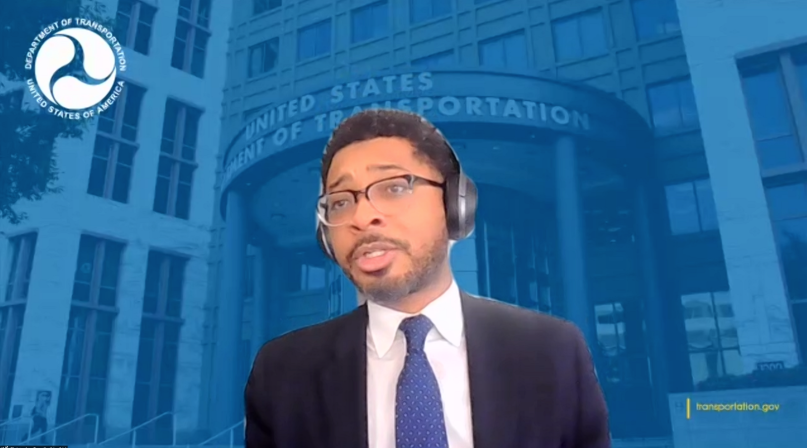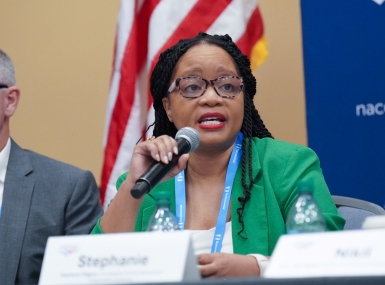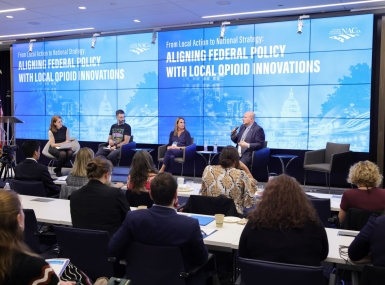LUCC members briefed on vaccinations, transportation
Author
Upcoming Events
Related News

Key Takeaways
The COVID-19 vaccination program is building momentum, according to Nancy Messonnier, director of the Centers for Disease Control’s National Center for Immunization and Respiratory Disease.
As of March 10, Messonnier said 60 percent of individuals over the age of 65 have received at least the first dose of the COVID-19 vaccine.
“The entire country really has to be coming together around this vaccine implementation or we’re never going to achieve the full success,” she told members of NACo’s Large Urban County Caucus (LUCC) March 10 during NACo’s Virtual Legislative Conference.
Messonnier emphasized the importance of counties and communities coming together to ensure successful vaccine distribution and said the CDC’s COVID data tracker, which features state-by-state vaccine data, will soon have county level statistics to provide full visibility of what’s happening at the local level.
“You’re going to see over the next six weeks a substantive increase in vaccine supply and in order to fully take advantage of that increasing vaccine supply, we’re going to need to turn on every channel that we can in order to administer vaccines,” she said.
She advised county officials to prepare for an increase in supply as more vaccines become available and highlighted programs to aid in distribution including the Retail Pharmacy Program, the Health Center COVID-19 Vaccine Program which ensures underserved communities are equitably vaccinated and the Federal Emergency Management Agency’s Community Vaccination Centers.
“This is a time for all of you who know your communities to build out a plan for how you’re going to best vaccinate,” she said.
In Franklin County, Ohio, vaccination efforts have focused on equity.
Franklin County Public Health Commissioner Joe Mazzola said the county has created an equitable COVID-19 vaccine strategy that is focused on communication, engagement and access.
In the diverse county of 1.3 million residents, the public health department focuses on adopting equity as the foundation for conducting its daily work.
There are currently 65 pandemic providers in the county including the public health department, hospitals, pharmacies and community health centers, he said. Each provider had to receive approval from the state.
Mazzola said fire and EMS personnel have also become pandemic providers. The health department is now allocating vaccines to local fire and EMS departments to go into the community to start to vaccinate underserved communities.
For Mazzola, lessons learned throughout the pandemic include the importance of local coordination, consistency in guidance and overall public health system response.
“It’s not just about the health department, it’s about our entire public health system,” he said. “That includes all of our county governments, nonprofits and healthcare partners as well.”
LUCC members also heard the latest updates on the Biden administration’s infrastructure agenda from Christopher Coes, the Department of Transportation’s principal deputy assistant secretary for Transportation Policy.
With the House passing the American Rescue Act, Coes said the relief includes funding to support transportation, transit, public transportation operations, airports and Amtrak.
He added that the administration is focused on providing reliable, convenient public transportation for the country’s essential workers and said Biden has committed to ensure there is high quality public transportation services in communities with populations of more than 100,000.
“That is going to require not only federal government support, but it’s also going to require us to coordinate with our local and state partners on the ground,” he said.
Attachments
Related News

LUCC members discuss importance of urban transit
Following low ridership during and after the COVID-19 pandemic, investing in urban county transit systems is essential, now more than ever, to cultivate thriving communities, LUCC members said.

Ongoing support is crucial for counties tackling overdose rates
The best treatment option for polysubstance use is “contingency management,” which is when someone with substance use disorder is given an incentive, such as money, for not using.

Proposed federal mandates cloud opioid treatment
Counties are positioned to quickly feel the effects of Office of National Drug Control Policy’s new priorities.
